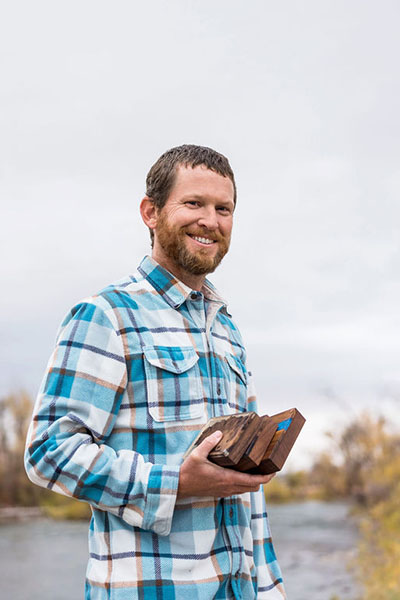July 18, 2025
from the Record, Spring 2025
CONSERVATION COWBOY
 Montana Fish, Wildlife, & Parks
Montana Fish, Wildlife, & Parks
With increased tourism and development trying to tame the wild West, Montana Fish, Wildlife, & Parks Region 3 Fisheries Manager Mike Duncan ’02 finds himself at the crossroads of conservation and compromise. Tasked with wrangling the competing priorities of government officials, commercial interests, local residents, and the fisheries themselves, Duncan’s work is nothing short of environmental diplomacy.
A honey hole for trout fishing, Region 3 is located in the southwest corner of the state and encompasses approximately 18,000 square miles, more than 12 percent of the total land area of Montana. The area has exploded in growth since 2010, with nature lovers, adventure seekers, and city escapers flocking to the area. The increased competition for resources has led to habitat fragmentation, waterway pollution, and introduction of invasive species.
“It’s a changing habitat,” Duncan says, “and everyone starts with a different baseline. The family who moved here last year has a different perspective than the rancher whose family has been here four generations.” To clear that hurdle, Duncan and his colleagues work hard to gain the trust of the public, translating science into relatable information so the public gains an appreciation for how the changing landscape is impacting wildlife and other natural resources that make Montana such a special destination—and how they can help mitigate the damage.
At the heart of Duncan’s strategy is trust—earned through empathy, transparency, and listening. “Most folks are trying to do their best by the land while also trying to make a living,” he says. “A lot of the time we’re getting fed tidbits from the media that make it seem like there’s a huge divide. I’ve found that when you sit down with someone, you’re actually a lot closer to middle ground than you thought.”
Duncan will be mentoring Bowen Charlebois ’26 this summer as Bowen tackles a comprehensive survey of the fish population vitalities in an assortment of mountain lakes and streams in the greater Bozeman area. Bowen’s goal for the surveys is to give Montana Fish, Wildlife & Parks a look into the status of the fisheries and native westslope cutthroat trout populations as well as informing decisions about angling pressure in these areas.
In a time when public land, biodiversity, and resource use are increasingly politicized, Duncan’s work is proof that collaborative conservation is not only possible—it’s essential.


